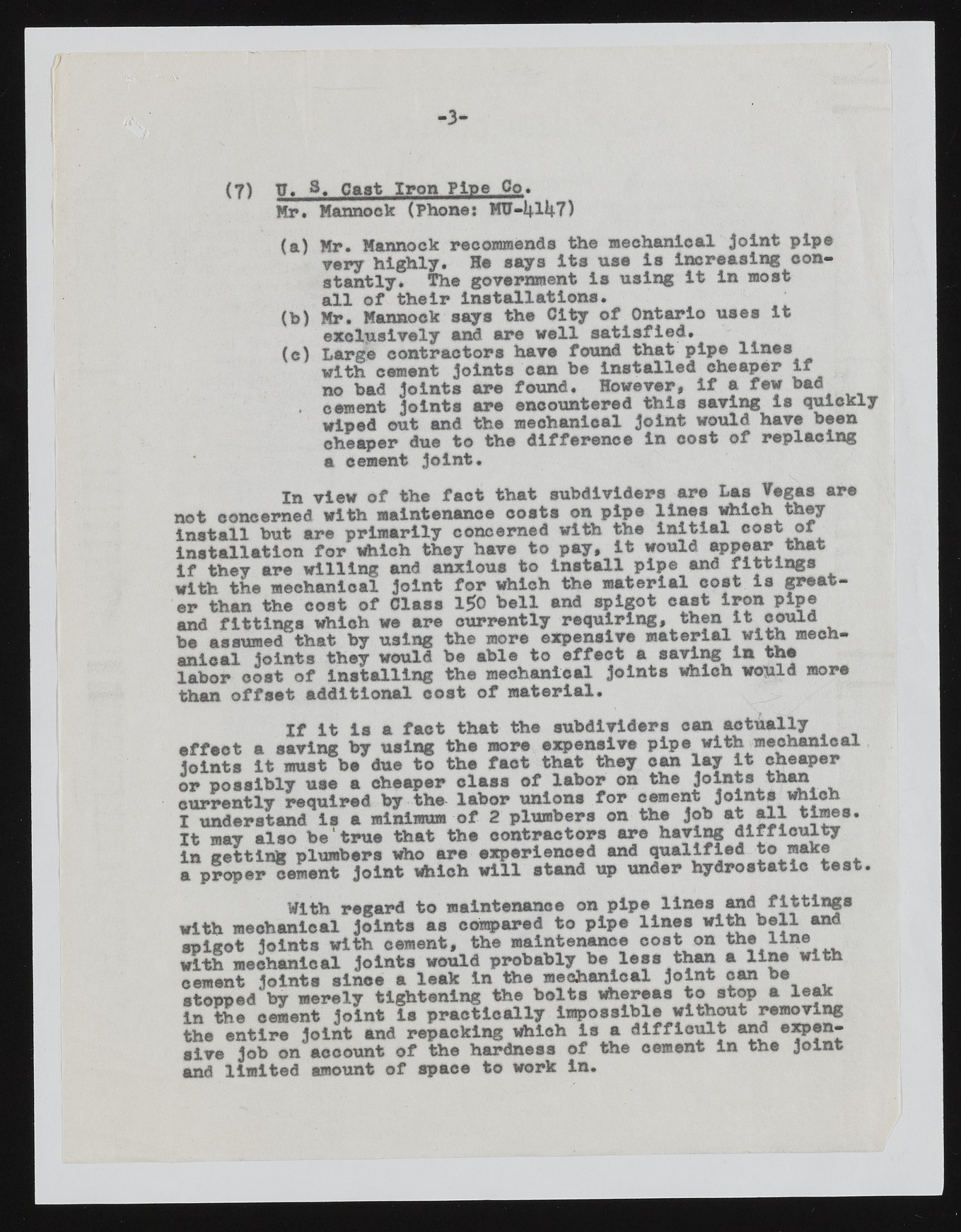Copyright & Fair-use Agreement
UNLV Special Collections provides copies of materials to facilitate private study, scholarship, or research. Material not in the public domain may be used according to fair use of copyrighted materials as defined by copyright law. Please cite us.
Please note that UNLV may not own the copyright to these materials and cannot provide permission to publish or distribute materials when UNLV is not the copyright holder. The user is solely responsible for determining the copyright status of materials and obtaining permission to use material from the copyright holder and for determining whether any permissions relating to any other rights are necessary for the intended use, and for obtaining all required permissions beyond that allowed by fair use.
Read more about our reproduction and use policy.
I agree.Information
Digital ID
Permalink
Details
More Info
Rights
Digital Provenance
Publisher
Transcription
3- (?) XT. 3, Cast Iron Pipe Co, Mr. Mannoek (Phones M0-i].ll|.7) (a) Mr. Mannoek recommends the mechanical Joint pipe ?ery highly. He says its use is increasing constantly. The government is using it in most (b) Marl.l oMfa nntoheekir sianysst atlhlea tCiiotnys .of Ontario uses it exclusively and are well satisfied* (c) Large contractors have found that pipe lines with cement Joints can be Installed cheaper if no bad joints are found. However, if a few bad . cement joints are encountered this saving is quickly wiped out and the mechanical Joint would have been cheaper due to the difference in cost of replacing a cement joint. In view of the fact that subdlvidera are Las Vegas are not concerned with maintenance costs on pipe lines which they install but are primarily concerned with the Initial cost of installation for Which they have to pay, it would appear that if they are willing and anxious to Install pipe and fittings with the mechanical Joint for which the material cost is greater than the cost of Class 1$0 bell and spigot cast iron pipe and fittings which we are currently requiring, then it could be assumed that by using the more expensive material with mechanical Joints they would be able to effect a saving in the labor cost of installing the mechanical joints which would more than offset additional cost of material. If it is a fact that the subdividers can actually effect a saving by using the more expensive pipe with mechanical Joints it must be due to the fact that they can lay it cheaper or possibly use a cheaper class of labor on the Joints than currently required by the labor unions for cement Joints which I understand is a minimum of 2 plumbers on the Job at all times. It may also be’true that the contractors are haying difficulty in getting plumbers who are experienced and qualified to make a proper cement Joint Which will stand up under hydrostatic test. With regard to maintenance on pipe lines and fittings with mechanical Joints as compared to pipe lines with bell and spigot Joints with cement, the maintenance cost on the line with mechanical Joints would probably be less than a line with cement Joint# since a leak in the mechanical joint can be stopped by merely tightening the bolts Whereas to atop a leak in the cement joint is practically impossible without removing the entire Joint and repacking which is a difficult and expensive Job on account of the hardness of the cement in the Joint and limited smount of space to work in.

